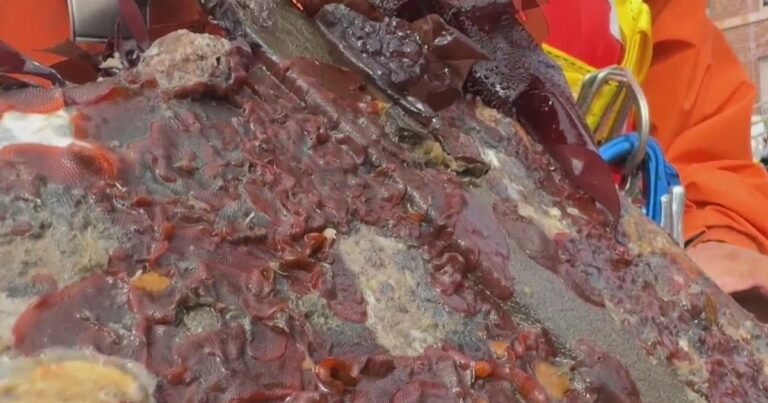Enhancing Marine Biodiversity: The Living Seawall Project in San Francisco
Introduction to the Embarcadero and Its Hidden Ecosystem
The San Francisco Embarcadero is renowned for its vibrant attractions, including Fisherman’s Wharf and Pier 39. However, a less visible but equally important marvel lies beneath the water’s surface. The San Francisco Bay supports a richly diverse marine ecosystem that is often overlooked by passersby.
Challenges Facing Marine Life
Despite its ecological richness, the Bay’s native species face numerous threats. Climate change, characterized by rising sea levels, extreme weather conditions, and increasing water temperatures, poses significant challenges. Further exacerbating these issues is the aging infrastructure of the existing seawall, which requires urgent repairs.
The Living Seawall Project: A Novel Approach
To address these pressing environmental concerns, a team of scientists from the Smithsonian Environmental Research Center (SERC) has launched an innovative initiative known as the Living Seawall Project. This experiment commenced in 2022, placing specially designed tiles along key locations, including:
- Pier 45 Breakwater
- Agricultural Building Seawall
- South Beach Harbor East Breakwater
In total, 288 tiles featuring varying textures and structures have been installed to mimic natural habitats. Researchers will monitor these tiles regularly, collecting data quarterly at low tide to assess marine life diversity and the impact of environmental factors such as salinity, tidal shifts, and wave activity.
Observing Marine Life Growth
Initial observations have yielded promising results. According to ecologist Chela Zabin, the tiles, once bare, are now flourishing with native marine life. Among the notable species identified are:
- Olympia Oyster, about the size of a quarter
- Sea spiders (pycnogonids)
- A striking yellow sea slug
Some tiles have been engineered to include unique textures—bumps, grooves, and ledges—that not only provide shade but also retain water, thus creating an inviting environment for marine organisms. Additionally, one type of tile is equipped with a special chemical signature to attract various species.
Future Implications of the Project
The core objective of the Living Seawall Project is to determine whether these textured tiles can foster a robust habitat for the Bay’s native species. “Traditionally, seawalls have been smooth and flat, but we’re exploring how we can modify them to enhance biodiversity,” notes scientist Corryn Knapp from SERC.
If successful, the findings from this project could significantly influence upcoming seawall reconstruction efforts in San Francisco, supported by the approved $425 million Prop A bond measure aimed at rebuilding the Embarcadero seawall. “We aim to create conditions that favor native species,” Zabin emphasizes.
Conclusion
The Living Seawall Project represents a significant step towards restoring marine biodiversity along the San Francisco shoreline. As researchers continue to monitor and gather data, the hope is that these innovative approaches will lead to more resilient ecosystems in the face of environmental challenges.



